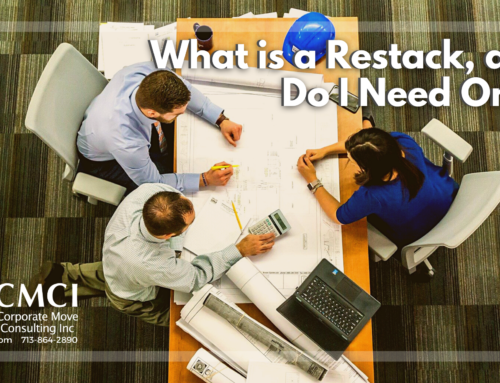
It’s easy to identify a grocery store packer’s first day on the job. Hung up on appearing efficient, he has suddenly placed your eggs at the bottom of a large stack, and your produce is lying directly on top of the raw meat you just purchased. We really can’t fault him for his enthusiasm—he just wants to get it done. Unfortunately, when it comes to packing, even something as small as groceries, getting in a hurry is a major pitfall. On a much larger scale, packing a space as large as a home or an office building can seem really time-consuming and overwhelming. However, if you start with the right mindset and the right materials, the stress you are feeling towards your move can be drastically reduced. Let’s get into it.
Before you even pack item #1, you need to create a game plan. Some may think this step is a waste of time. Let me emphasize it for the naysayers. You have more stuff than you realize, and your life is going to feel a bit off-kilter until everything has found its intended spot. You need to pack with the idea of unpacking in the back of your mind. Think about where each item will go in your new space. The things going to the same destination need to be grouped together.
The rule of thumb is to pack each box to be a maximum of thirty pounds. This usually means that large boxes will have lightweight items like comforters and pillows while smaller boxes will carry bulkier possessions like books, cookware, picture frames, etc. Do not pack books or paper in large boxes; you are likely to injure yourself or a mover upon loading. Drawers in your furniture can also be used to store your articles – just make sure you remove the drawers before loading the furniture and put them back in securely before going to your destination. For awkwardly shaped belongings like pots, pans, and other kitchen appliances, our suggestion is to use a gondola—a large, slim box—on a dolly for the easiest packing/unpacking job you can imagine!
Most importantly, it’s imperative that you keep a running log of which items go in which boxes. Label boxes with the room they will go to and a numeric mark. You can identify box destinations with color coding, printed labels, or just a clear notation with permanent marker—whichever method you prefer will work. Something as methodical as a digital spreadsheet for all your belongings may seem excessive at first, but when you have 25 identical cardboard boxes labeled “kitchen” and you are in desperate need of a cup of tea after the moving crew leaves your new home, you’re going to want to know which box has the teakettle without rummaging.
So when you begin packing, you have your boxes, your trusty excel spreadsheet, and the rest of the necessary equipment for the job at hand: labels, packing peanuts, bubble-wrap, packing paper, box cutter, and a few rolls of strong, new box tape. You’re finally fully prepared for the next step—actually packing.
Don’t be the grocery store packer mentioned above. He has good intentions, but he’s ruining your stuff. ALWAYS pack your boxes with the heaviest items on the bottom, and the lightest ones at the top. When you inevitably find that your box has empty spaces, fill them with packing peanuts, bubble wrap, or paper. If a box isn’t completely filled, it will not be sturdy, and your possessions can be damaged in the moving process. Place miscellaneous knick-knacks in zip-up bags and try to find the original boxes for oddly shaped appliances. Lastly, if you didn’t use something in your old space, you probably won’t use it in your new one. Donate it, sell it, get rid of it, but don’t waste time, money, and space packing up objects that don’t have a purpose for you or that you know you will eventually throw away.
We hope these tips helped! Remember, if you are looking to move your office space, contact CMCI; we’re the experts on relocation, and we keep your business or organization profitable throughout the process.










